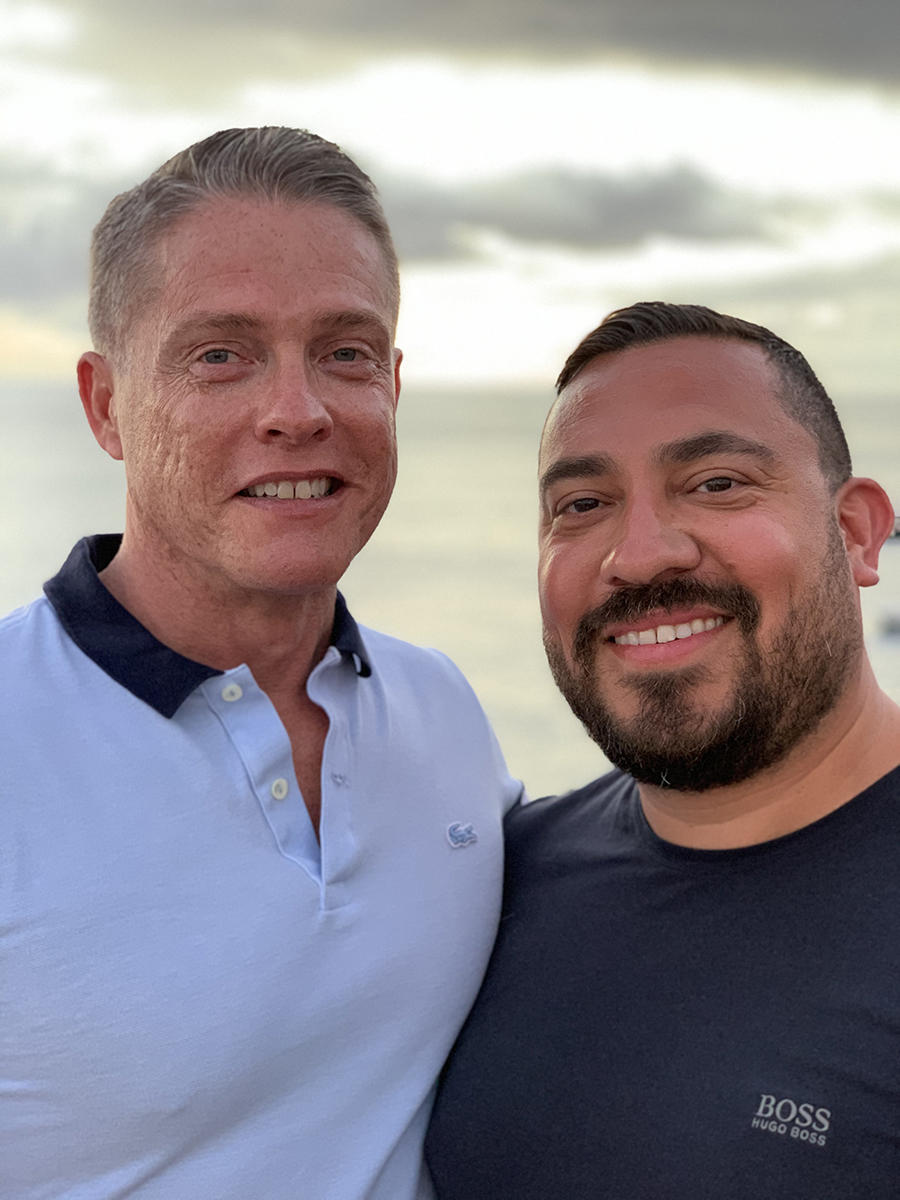Spinal Cord Tumor Survivor Shares Tips to Prepare and Recover from Surgery
, by Lee, Spinal Cord Tumor Survivor
Lee was shocked to learn he had a tumor in his spinal cord that required surgery. He shares how he found the right neurosurgeon, prepared for surgery, and recovered fully.
In August of 2018, I had numbness in my right leg and felt a stabbing pain in my hip. I saw a private surgeon and began physical therapy. A couple months later, with the pain still lingering, I met with a local surgeon who ordered a magnetic resonance imaging (MRI) scan.
On October 12, my birthday, the surgeon pulled up the MRI scans and said, “You have a tumor in your spinal cord between the T12 and L1 vertebrae, in the upper middle of your back.” Nothing in your life can prepare you for this news and to hear that word: cancer. I had to say it over and over to myself so it would be real.
She suspected my tumor was an ependymoma, a rare brain or spine tumor. That day, I researched ependymoma and found NIH. I reached out to the Surgical Neurology Branch to schedule an appointment. At the same time, my local doctor referred me to another neurosurgeon who said the tumor was operable, but I still wanted a second opinion at NIH.
A week later, I met with neurosurgeon, John Heiss, M.D., and his clinical team at the National Institute of Neurological Disorders and Strokes (NINDS) at NIH. They are wonderful people who were kind and knowledgeable to both me and my support network—my husband, Randy, and friends—during our visit. Dr. Heiss explained the potential risks, but it seemed the surgery would work.
Preparing for Surgery
I learned to accept that I was not in control. I decided to put my life in Dr. Heiss’s hands because I felt comfortable that he knew and cared so much about me and my case. He also provided thorough documentation, which made me believe the surgery would go well.
Now that I knew what it was and where, my health deteriorated very rapidly. I had bad spasms where the tumor was and I couldn’t ride in a car anymore. I could not even tolerate the car ride to pick up my mom from the airport. It was terrifying that my physical and mental health went down so quickly.
My surgery was scheduled for November 6. I had a week to prepare mentally and make plans for my family to come. There was a fear of the unknown. I planned for the worst but knew that wasn’t necessarily going to happen. I began researching and coming up with a game plan if the surgery resulted in more complications.
Recovering at NIH
My surgery lasted eight hours. I spent the first 24 hours following surgery in the ICU to make sure there was no spinal cord fluid build up. My two ICU nurses, Amy and Gail, were so special and mean the world to me. I still speak to them and visit them. They helped feed me and helped me go to the bathroom. They comforted me and kept me company when my loved ones were gone. They gave me strength.
Two days after surgery, I was able to sit up and walk. They asked me to walk across the room, but I was determined and walked all the way down the hall with a cane and the support of a nurse. On day three post-surgery, I was able to take a much needed shower and could squat down and pick up a bottle of shampoo. That day, the pathology report came back. My tumor was a non-cancerious schwannoma, and I was 100 percent cured. I started bawling with my nurse, Nikki. This was wonderful news to hear.
On day four post-surgery, I was able to go home. I felt so broken when I got there and Dr. Heiss and his team put me back together again. They gave me a second shot of life.
Recovering at Home
When I arrived home, I could walk up the steps, shower, and cook. There was still pain at the incision, so for one month I took narcotics. Then was hard to let go, but I was able to with the support of my husband Randy. He took care of me even while maintaining his full-time job as a school teacher, and I am forever thankful.
The following weeks, I went to physical therapy to gain more independence. I had to learn how to get up and out of bed properly, get dressed, pick up heavy things, and strengthen my core. How quickly and well you recover all depends on you, your health history, and your support system at home. Seven weeks after surgery, I felt completely fine and was snorkeling in the Caribbean the day after Christmas.
I pushed myself to get up because I didn’t want to let life go by anymore. I now appreciate life and people for what they are. Before my diagnosis, I put things off. Now, I indulge in the good things life has to offer. Every day is a gift. Do it! You deserve it. We should all take care of ourselves and our mental health better.
In January of 2020, I had clear MRI scans. I am very fortunate that I am living a full life with a new perspective. Sometimes, I almost feel guilty that I got good news and others aren’t as lucky, but I realized I had to turn this horrible thing into something positive and help others. I want to help refer others to NIH so they experience the same level of success I did.
My advice for others is to seek out the best care possible and always get a second opinion. NIH is the place to start. You have to be your own best advocate or find someone you trust to advocate for you.
